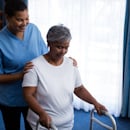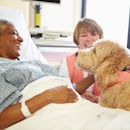
Nursing Tips: Hospital-Acquired Infection Prevention
This month’s Tip to Treasure focuses on Infection Prevention. Did you know that nearly two million infections are acquired in healthcare settings every year across the country, and hospital acquired infections (HAIs) kill about 100,000 Americans each year?
How the NPSG Ensures Patient Safety
In 2002, The Joint Commission established a National Patient Safety Goals (NPSG) program to help accredited organizations address specific areas of concern in regards to patient safety. One of the NPSG is infection prevention.
Although infection prevention is the backbone of all nursing interventions, the terminology is often confusing. Here are some of the more commonly encountered infection prevention terminologies and their application to clinical practice.
What's the Difference between Colonization and Infection?
Colonization is the presence of micro-organisms in a host without clinical signs or symptoms of infection. Infection is the detrimental colonization of the host with clinical signs and symptoms of infection.
Even if you have been exposed to infectious disease, it doesn’t mean you will necessarily become infected. Micro-organisms can colonize a host but not actually interfere with the normal functioning of the host. When this occurs, the micro-organisms lay dormant and do not cause any clinical signs or symptoms of infection or disease.
Infection may occur when the colonization of micro-organisms becomes detrimental to the host, by interfering with the functioning of the host. When this occurs, clinical signs and symptoms of disease may become apparent in the host.
What's the Difference between Standard Precautions and Isolation Precautions?
Standard precautions apply to all patients and are intended to reduce the risk of transmission of microorganisms whether they are recognized or not. Standard precautions apply to all patient encounters involving all body fluids, except sweat, regardless of the presence of visible bodily fluid. The healthcare professional must select appropriate personal protective equipment (PPE) in anticipation of nursing interventions. PPE includes gloves, gowns and mask.
On the other hand, isolation precautions are employed only when dealing with an infectious or communicable disease. There are three kinds of isolation precautions, namely airborne, droplet and contact precautions.
What's the Difference between Airborne Precautions and Droplet Precautions?
Airborne precautions are designed to prevent transmission of extremely small particles of evaporated droplets that can stay suspended in the air for long periods of time. Particles smaller than 5 microns require airborne precautions, while particles larger than 5 microns call for droplet precautions. Consult your hospital's infection preventionist if you are unsure about which type of precaution is most appropriate.
© 2015 AMN Healthcare, Inc. All Rights Reserved.




